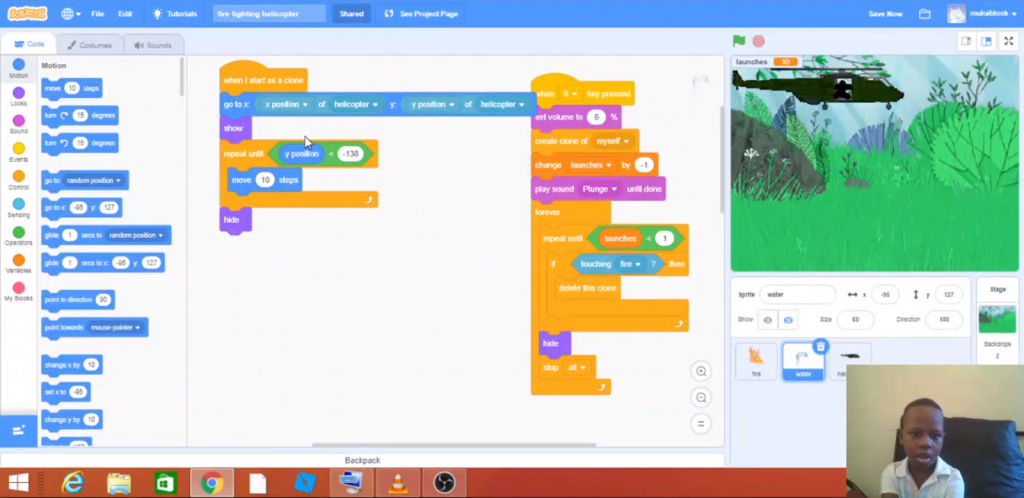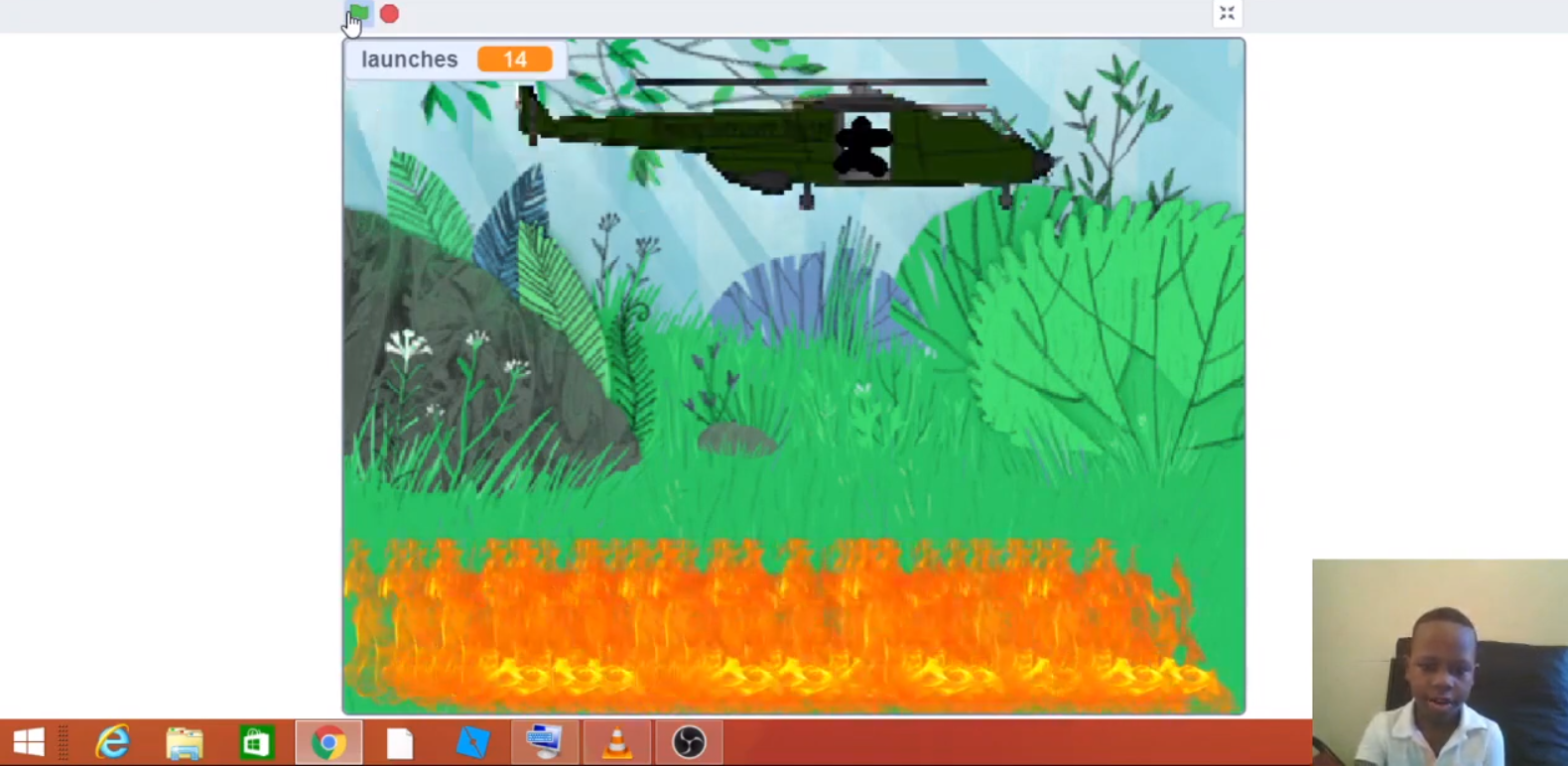STEM learning is mostly about designing creative solutions for real-world problems.
Once students start to learn within the context of problem-based STEM design , they can more clearly see the real impact of their learning. This explains the learning outcome of one of our students by the name Nzavi.
A 9 year old Scratch Intensive graduate student. The one thing he has clearly learnt from his STEM lessons so far is that Problem-solving involves finding answers to questions and solutions for unwanted effects which to him is the accidental fires that occur and make people to lose their properties and even in worst cases, their lives.
As a solution to this problem, Nzavi designed a Firefighter Helicopter program with Scratch, adding visuals to it.

How the project works
As he explains in his presentation in the video Below, the helicopter stops a forest fire. He coded it simply in the form of a game so that the player, that is, the firefighter only uses the arrow keys to move the helicopter where the fire is, and the number 0 in the keyboard to pour water to stop the fire.
Using the computer science concepts of variables, he’s able to code such that the computer can learn when the game ends and write “Game Over” automatically.
He’s also applied the concept of event handling, such that his code allows the character (in this case the helicopter) to respond to events triggered by the user or other parts of the program which are the arrow keys for moving the helicopter and the 0 for pouring water.
He’s also made it challenging and creative by putting conditional statements ( a set of rules performed if a certain condition is met.) in his game where the game ends after the specified number of water launches ends.
Talk of a genuine connection between skills and application.
Check out more explanation of the firefighter helicopter from the inventor himself in the video below.



Leave A Comment